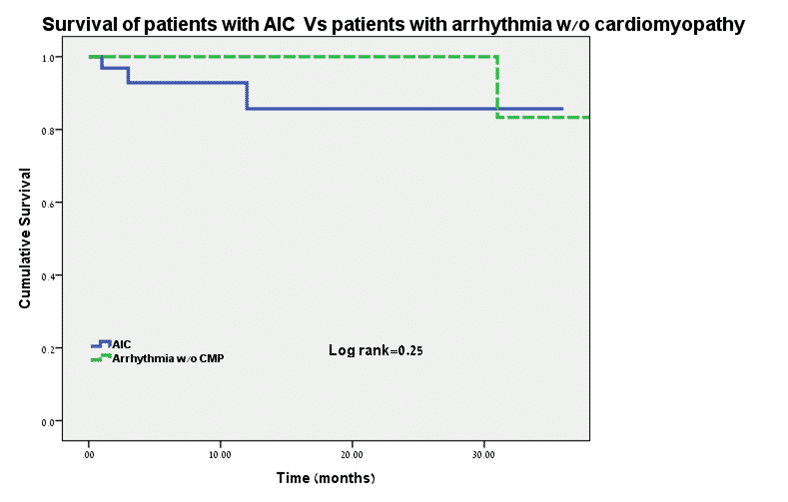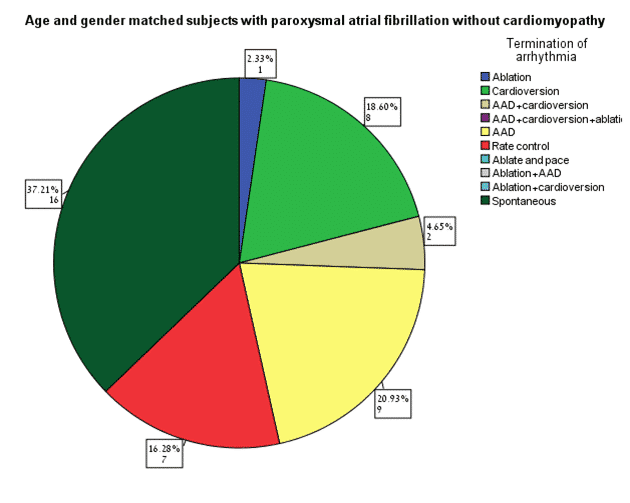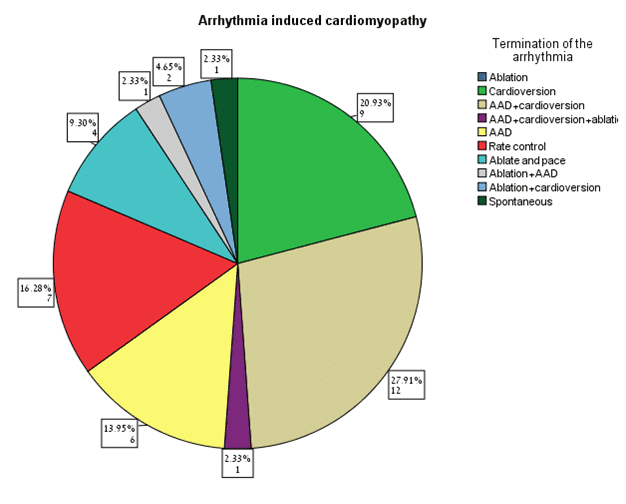
Survival in Patients with Arrhythmia Induced Cardiomyopathy is Similar to Age and Sex-matched Patients with Paroxysmal Atrial Fibrillation
2Medicine, Tel-Aviv University
Introduction: Arrhythmia induced cardiomyopathy (AIC) is a reversible cause of heart failure (HF). Numerous antiarrhythmic drugs and radiofrequency ablation (RFA) techniques are potential treatments of AIC. The actual use of these therapies in AIC patients and their overall survival are unknown.
Aim: To compare therapy approach and prognosis between patients with AIC (group A)and age- and sex-matched patients with paroxysmal atrial fibrillation (PAF) and normal LV function (group B).
Methods: Forty three patients with AIC were admitted to the Sheba Medical Center between 2012 and 2015. AIC was defined as LV dysfunction with LVEF<50% with concurrent tachyarrhythmia, and recovery of LV function (increase of LVEF≥15%) following either rhythm or rate control. These patients were age- and sex matched to patients with PAF and normal LV function .
Results: Over a mean follow up of 11 months (±12) five patients died (3 from group A ). Patients in group A had higher heart rates (135 vs 122, P=0.03) , they were more symptomatic (predominantly HF symptoms, figure), and their symptoms lasted longer (Table). In addition, they had larger dimensions of left ventricle as well as increased QTc intervals. Medical approach was more proactive in group A patients, with higher use of electrical cardioversions (24 vs 10, P=0.002) and RFA (15 vs 5, P=0.01). Interestingly, 9.5% of AIC group had episode of torsades de pointes, where as none were documented in group B patients (P=0.04). Nevertheless, no differences in survival rates were observed (Log rank=0.25).
Conclusions: AIC patients presented with more severe symptoms and were more likely to develop life threatening arrhythmia. Furthermore, electrical cardioversions and RFA were used more frequently in these patients. Survival rates, however, were similar to age sex matched patients with PAF and normal LV function. Larger cohorts are required in order to better characterize these patients.



Powered by Eventact EMS